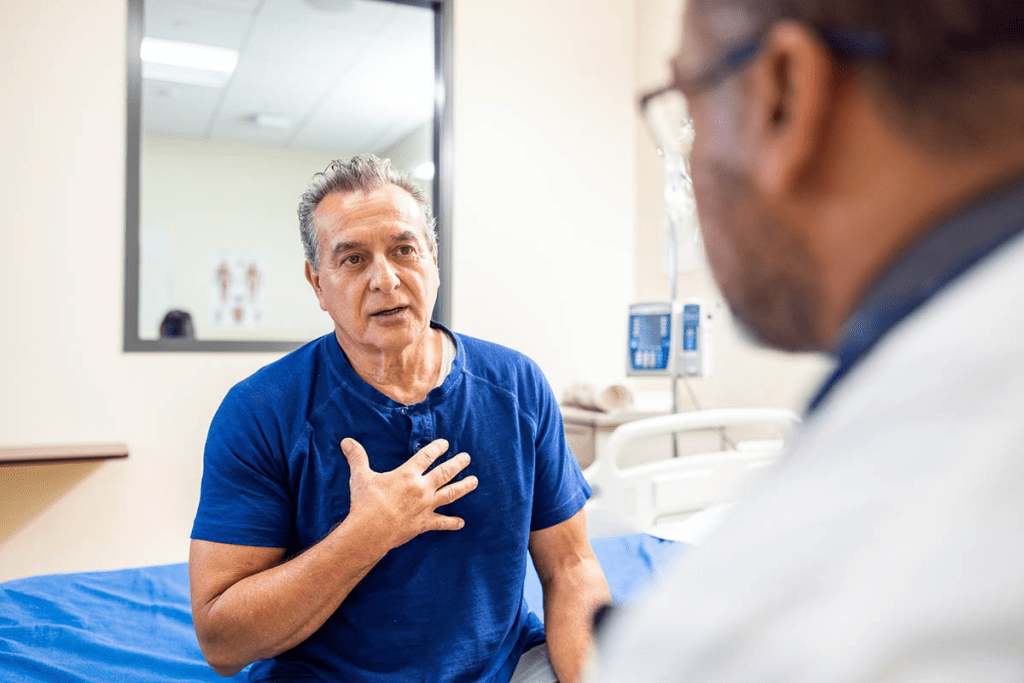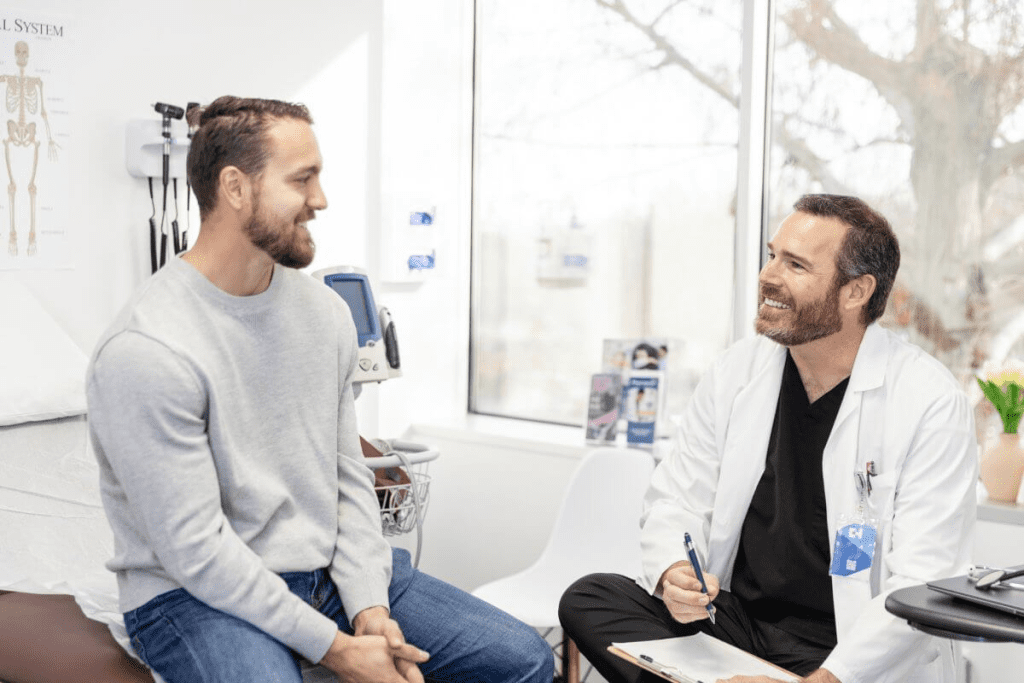Last Updated on November 13, 2025 by
Cancer treatment is getting better fast. Some types are now almost curable. We see big steps forward in treating certain cancers, like pediatric leukemias and lymphomas. These have seen a big jump in 5-year cancer survival rates, going over survival percentages of 90%.

Thanks to new therapies and better treatment plans, some cancers can be cured if caught early. But cancer cells can change and fight off treatments. This makes it hard to get a full cure. At Liv Hospital, we aim to use the newest cancer treatments. We’re dedicated to top-notch healthcare.
Finding a cure for cancer is tough. It’s hard to define what a cure is and to beat the disease’s resistance. Cancer isn’t just one disease but many, with over 100 types, each with its own problems.

In oncology, a cure means no more risk of cancer coming back. But this can be tricky because of the many types of cancer and treatments. “We call a patient cured when they’ve had treatment and show no signs of cancer, and the chance of it coming back is low,” says a top oncologist. To get there, we need to know a lot about cancer and develop targeted treatments.
“The goal of cancer treatment is not just to extend life, but to cure the disease whenever possible.”
”
Cancer is hard to cure because it keeps changing and adapting. This makes it hard to treat. As we try to fight cancer, we face its complex nature. The question of why is cancer so hard to cure has many answers, from the disease itself to treatment challenges.
Understanding why cancer resists treatment is key. Research has led to new treatments, giving hope to patients. Yet, the search for a cure goes on, driven by the need to help all cancer patients.
Learning about cancer survival rates can be both enlightening and hopeful. It helps patients and healthcare providers understand treatment progress and outcomes. These statistics give insights into treatment effectiveness and the advancements in cancer care.

The 5-year survival rate is a key metric for cancer treatment outcomes. It shows the percentage of patients alive five years after diagnosis. This helps us understand the prognosis and treatment success for various cancers.
Key aspects of 5-year survival rates include:
Recent statistics show a decline in the overall cancer mortality rate. Over 4.5 million deaths have been averted from 1991 to the present. This improvement is due to better treatments and early detection methods.
The factors contributing to the decline in cancer mortality include:
By understanding cancer survival statistics and the factors influencing them, we can keep making progress in the fight against cancer. This will improve the lives of patients worldwide.
Medical research has made big strides in treating pediatric cancers. This has led to better survival rates and quality of life for kids. It’s a big step forward in cancer treatment.
Pediatric cancers, like leukemias, have seen major improvements. New treatments and protocols have greatly increased cure rates. For example, acute lymphoblastic leukemia (ALL) now has cure rates over 90% in some cases.
Childhood leukemias, like ALL, have become a success story in cancer treatment. New chemotherapy and targeted therapies have greatly improved outcomes. Risk stratification has also led to more personalized treatments.
Several factors have contributed to these high cure rates:
Other pediatric cancers have also seen big improvements. For example, certain lymphomas and solid tumours like Wilms tumour and neuroblastoma have benefited from new treatments. These include surgery, chemotherapy, and radiation therapy.
While some cancers have high cure rates, others are harder to treat. It’s important to understand the worst types of cancer. This helps focus research and improve outcomes.
We’re committed to pushing the limits in pediatric oncology. We aim to deliver top-notch healthcare and support for kids and their families. By investing in new treatments and personalized care, we’re working towards a future where all children with cancer can be cured.
Lymphomas were once tough to treat, but now show promise. Thanks to new treatments, some types are very curable. This success comes from better chemotherapy and radiation therapy.
Hodgkin lymphoma is getting closer to being fully curable, with over 90% cure rates. We’ve made big strides in treating it with advanced methods. These improvements have greatly helped patients, making Hodgkin lymphoma one of the most treatable cancers.
Non-Hodgkin lymphoma is a diverse group, but some subtypes are showing good results. We’re working to understand these subtypes better and find targeted treatments. New approaches like immunotherapy and precision medicine are also helping patients live longer.
We’re committed to making treatments even better and finding new ways to fight lymphomas. With ongoing research, we’re hopeful for the future of lymphoma patients.
Early detection has changed how we treat skin cancer, leading to better outcomes for patients. Skin cancer is very common and has seen a big jump in survival rates. This is thanks to better ways to find and treat it early.
Regular screenings and quick action are key. Catching skin cancer early means a much better chance of beating it. This is very true for melanoma, the most serious type of skin cancer.
Melanoma can be cured about 99% of the time if caught early. This shows how vital early detection is for survival. We suggest regular skin checks and knowing the signs of melanoma, like changes in moles or new spots.
Early-stage melanoma is usually treated by removing the tumour surgically. Sometimes, more treatments are needed to stop it from coming back.
Non-melanoma skin cancers, like basal cell and squamous cell carcinoma, are also curable if found early. They are more common but less aggressive than melanoma. But if not treated, they can cause serious harm.
We emphasize the need for sun protection and regular skin checks to spot problems early. This way, patients can greatly increase their chances of successful treatment and survival.
Prevention and early detection are essential in fighting skin cancer. By knowing the risks and taking action, people can lower their chance of getting serious skin cancer.
Testicular cancer is now seen as a prime example of how to cure cancer. This success comes from effective treatments like surgery, chemotherapy, and radiation therapy.
Thanks to these treatments, testicular cancer is very treatable. In many cases, the cure rate is over 95%. Early detection and advanced treatments are key to this success.
Several reasons make testicular cancer highly curable. First, it’s often caught early. This is thanks to more people checking themselves and being aware of the signs. Second, the cancer responds well to treatments like chemotherapy and radiation.
“The cure rates for testicular cancer are among the highest in oncology, making it a beacon of hope for patients and clinicians alike.”
Treating testicular cancer usually involves a mix of surgery, chemotherapy, and sometimes radiation. The choice of treatment depends on the cancer’s stage, type, and the patient’s health.
Thanks to these treatments, testicular cancer has become a model for curability. It offers hope and guidance for treating other cancers.
“The progress made in treating testicular cancer demonstrates the potential for achieving high cure rates in other cancers through similar multi-disciplinary approaches.”
New treatments are changing how we fight the deadliest cancers. They bring hope to people all over the world. These new therapies are making cancer care better, giving patients new ways to fight their disease.
The Immunotherapy Revolution is a big step forward in cancer treatment. It uses the body’s immune system to attack cancer. This method is more precise and less harsh than old treatments.
Immunotherapy boosts the body’s fight against cancer. It uses things like checkpoint inhibitors and CAR-T cell therapy. These methods are showing great promise in treating tough cancers.
Experts say immunotherapy could lead to lasting cures for once hopeless cancers. Recent breakthroughs in this area show how fast progress is being made.
“The future of cancer treatment lies in personalized medicine, where therapies are tailored to the individual characteristics of each patient’s cancer.”
Precision medicine and targeted therapies are also key areas. They use a patient’s cancer’s unique traits to create better treatments. This means treatments that work better and cause fewer side effects.
As we keep moving forward in cancer research, combining precision medicine and immunotherapy will be vital. Our goal is to make sure our patients get the latest and best treatments.
The world of stage IV cancers is changing. What was once seen as a death sentence is now seen as a manageable condition. This change is thanks to new treatments like immunotherapy and targeted therapies.
Cancers like pancreatic cancer and glioblastoma were once thought to be hopeless. But now, thanks to immunotherapy, there’s new hope. This treatment uses the body’s immune system to fight cancer cells.
Checkpoint inhibitors are a key part of this progress. They help the immune system attack cancer cells more effectively.
Many case studies show the power of modern cancer treatments. Patients with stage IV cancers, once given little hope, are now in remission. For example, some with advanced melanoma have seen their cancer disappear after immunotherapy.
Improving life quality for those with late-stage cancer is just as important as finding a cure. Advances in palliative care and pain management have made a big difference. These improvements help patients live better, even in tough times.
We focus on caring for the whole person, not just the cancer. We aim to improve well-being and help patients live with dignity and comfort.
The future of cancer treatment looks bright. Research and care improvements are making a big difference. We’re getting closer to finding a cure for different types of cancer.
We’re dedicated to top-notch healthcare and support for our patients. We use the latest in cancer treatment. This progress is leading to better results and a deeper understanding of what it means to be “curable” in cancer.
Thanks to new treatments like immunotherapy and precision medicine, there’s hope for cancer patients. Our goal is to not just extend life but to make it better. We aim to support international patients seeking advanced medical care.
The most common cancers vary by population. But breast, lung, and colon cancers are often at the top.
Some cancers, like testicular cancer and Hodgkin lymphoma, have high cure rates. They often reach over 90% or 95% when caught early.
Many cancers can be cured, mainly if found early and treated well. New treatments like immunotherapy and precision medicine are helping a lot.
Cancer’s ability to change and resist treatments makes it tough. It needs constant research and new treatment methods to fight it.
Pancreatic, lung, and some brain cancers are very deadly. They often have poor outcomes because they’re found late and have few treatment options.
There’s no single cure for cancer, as it’s a disease. But treatments like surgery, chemotherapy, and immunotherapy can cure some cancers.
Big steps forward include immunotherapy, precision medicine, and targeted therapies. These have helped patients with hard-to-treat cancers.
Survival stats show how well treatments work and help improve care. They guide doctors to better treatments and outcomes for patients.
Finding cancer early is key. It greatly improves the chances of success. For example, melanoma’s cure rate is about 99% if caught early.
Yes, cancers like testicular and Hodgkin lymphoma are very curable. They often have cure rates over 90% or 95%.
Subscribe to our e-newsletter to stay informed about the latest innovations in the world of health and exclusive offers!